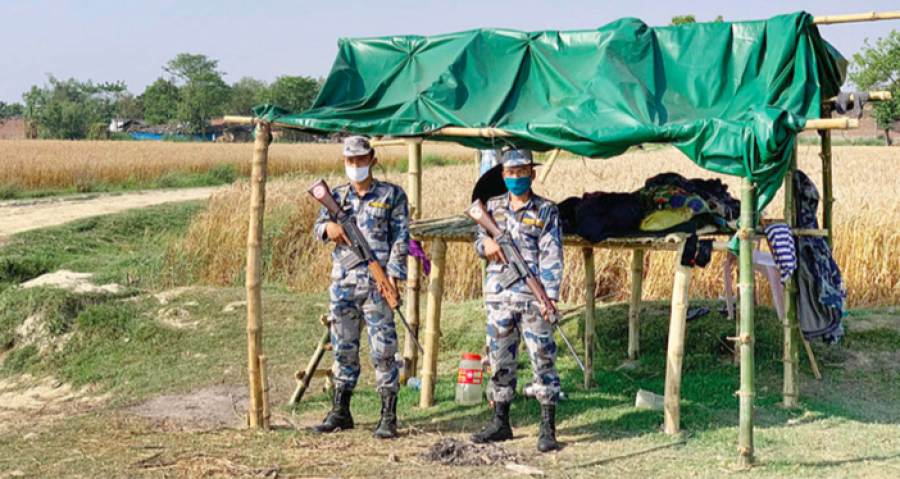National
Successive governments have failed to ensure state’s presence in border towns and villages, a report by national rights body says
The four-year long study has also pointed out the lack of basic services like schools and health facilities in border areas and harassment faced by locals at the hands of Indian border security force.
Binod Ghimire
The Nepali citizens residing in the districts bordering India and China are facing apathy from the state and at the same time putting up with the harassments from the neighbouring countries, particularly India, according to a report by National Human Rights Commission.
The report published after a four-year long study in 28 bordering districts, including four with China, says the successive governments have paid little attention towards the development of border towns and villages, where the people are deprived of basic services like health and education.
Many border villages lack schools and, as a result, Nepali children go to schools on the other side of the border. In places where there are schools, very few of them provide education in the local mother tongue, according to the report.
Though it is a constitutional right of the children to get basic education in their mother language, it has not been implemented properly. So far, textbooks on only 24 different languages have been prepared by the Curriculum Development Centre. More than 100 languages are spoken in the country.
According to the report, in the lack of bridges the people of Susta in Nawalparasi district and Darchula district in western Nepal have to travel through Indian territory to reach their villages.
Similarly, the people of Mechipari in Jhapa, Sri-Lanka Tapu in Sunsari and Gobargadha in Saptari, among other border districts, have been risking their lives while crossing rivers to get to the other parts of the districts during the rainy season, the report says.
“The people living in the bordering areas are the frontline protectors of the borders. They are the pride of the country. However, the successive governments till date have failed to look after them,” Govinda Sharma Paudyal, a member of the commission who was also in the study team, told the Post.
He said the state has not only continued to remain apathetic towards the concerns of people living in border towns and villages but it has also failed to intervene when they are being harassed and intimidated by the neighbouring countries.
The report points out that thousands of people suffer every year due to the inundation caused by the dams and embankments constructed unilaterally by the Indian authorities. India has constructed 21 dams and embankments along its border with Nepal. The southern neighbour is also developing a highway, parts of which pass through the no man’s land.
Floodings caused by the embankments built by India have so far have killed at least 89 people and displaced more than 60,000 others, according to the report.
The report has also mentioned that several Nepali citizens have lost their lives at the hands of the Indian border security force, Seema Sukhsha Bal. Basu Dev Sah from Morang, Mukul Raya from Rautahat, Govinda Gautam from Kanchanpur and Man Bahadur Tamang and Gopal Kaphle were killed by the Indian force following disputes over border incursion and encroachment of Nepal soil, the report states.
The study also has found at least four-people who have been arrested by the Indian security force in recent years have gone missing.
Paudyal says inadequate security force deployment from Nepal side too is responsible for the atrocities meted out by the Indian border force on the Nepalis living in border towns and villages.
The study shows on an average Nepal has one security post after every 50km along the border it shares with India; along the Nepal-China border, security posts have been established at the interval of 53km.
Meanwhile, India has set up border security posts at every 5km interval.
The report has pointed out that Nepal and India have major border disputes in Susta of Nawalparasi district and Limpiyadhura, Lipulekh and Kalapani area in Darchula district. Similarly, Nepal and China have a dispute over pillar 57 in Bigu Rural Municipality in Dolakha district.
The Nepal government has already endorsed a new administrative map incorporating Limpiyadhura, Lipulekh and Kalapani area and has registered a constitution amendment bill to adjust the map in the national emblem.




 19.12°C Kathmandu
19.12°C Kathmandu















